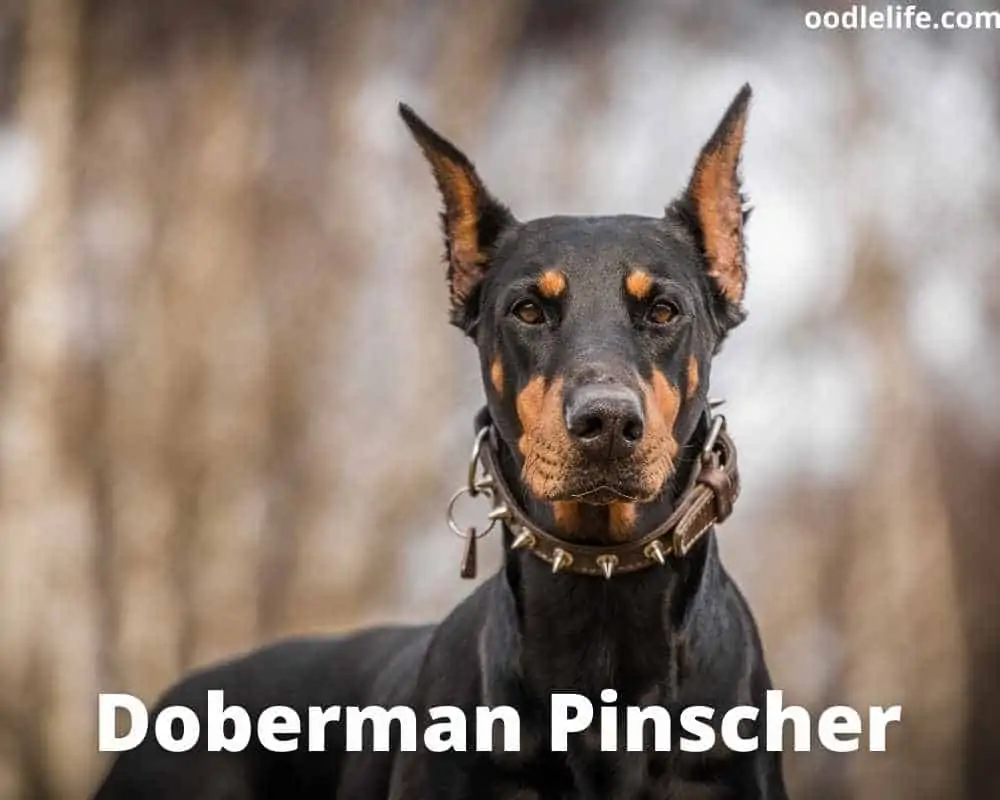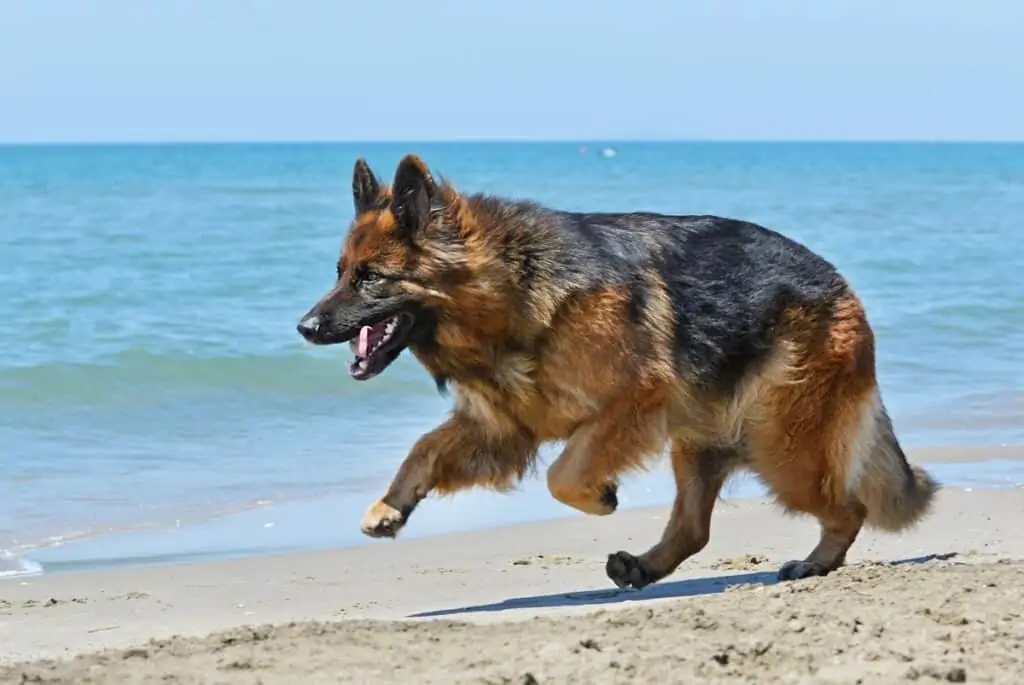Why is My Dog Dumb? [How to Test in 4 Steps]
Dogs are man’s best friends. They’re local, loving, and most of them are so smart you can count on them to get out of any sticky situation. They’re also fairly adept at learning clever tricks.

Are you looking at your dog who’s just run into the glass door and can’t help but wonder why your dog is adorably cute but seems to lack intelligence? Are you asking yourself whether you get yourself a dumb dog? What you may think of as “dumb” behavior may just be your dog’s personality. Or it could be a result of several other factors. Let’s take a look at what makes dogs act this way.
Why Do Dogs Act Dumb?
Is your dog able to follow simple instructions like “Sit” and “Roll Over” at home without any problems, but when you want to show him off a bit, he can’t do anything that’s asked?
Dogs can act dumb sometimes, but it doesn’t mean that they are at the low intelligent spectrum. There are certain reasons why they might not do as they’re told. Surprisingly enough, you might be a contributor to this behavior.
Lack of Socialization
If your dog was not socially trained as a puppy, it would carry this awkward behavior into adulthood. Your dog wouldn’t know how to behave around humans and other animals properly. And if, as a grown dog, you rarely take out your dog for walks or during playtime and if it is constantly being left alone, you can expect your pet to be socially awkward.
It is this socially awkward behavior that may lead you to conclude that your dog is acting dumb.
Lack of Training or Trained Incorrectly
Your dog may be acting dumb because you have not trained it sufficiently yet. And if this is the case, you can’t expect your dog to do tricks if even basic training has not been given.
It is also possible that you have provided the training, but the methodology you used is not correct. The best training method is positive reinforcement, where you reward your dog when it does something correctly or when you can see an effort from your dog wanting to do the right thing.
You also need to ensure that the training is consistent. Just because your dog can do a trick or follow a command one time does not mean that you’re done. You need to reinforce the training in different locations and in varying circumstances repeatedly.
Over Excitement
Your dog could also be over-excited because of stress or just because your dog is happy. You need to be able to observe your dog’s behavior carefully when it is overwhelmed. Some signs to look for would be drooling, tail wagging, panting, and whining.
Needs more Exercise
If your dog is almost always sedentary, it will struggle to focus on you and the things you are asking it to do. You can expect your dog to be hyperactive because this is its way of coping with and burning off any excess energy it may have.

How Do You Test Your Dog’s Intelligence?
While there are plenty of ways you can assess your dog’s IQ, there is one standard test to identify if your dog might have lapses when it comes to executing some exercises.
If you’re looking for a reliable but easy “is my dog dumb quiz,” then it is best to use Dr. Stanley Coren’s IQ test.
This is a series of exercises that should not be conducted all at the same time. It might just confuse your dog as it would not understand why you’re making it do all these activities. Your pet can get overwhelmed, and this may affect their initial approach to the test.
By the end of every test, make sure that you give your dog plenty of reassurance and positive attention.
Below are the tasks that you ask your dog to do. The goal here is to evaluate your dog’s ability to retain information, learn, reason, and solve problems. There is also a scoring system at the end, so you can determine the IQ range of your dog.
Task #1
Place a blanket or a large towel over your pet’s head.
Goal: To test your dog’s problem-solving skills.
Scoring: Three points if your dog frees himself from the towel in less than 15 seconds. Two points if it takes your dog 15 to 30 seconds, and a single point if your dog takes more than half a minute to be free.
Task #2
Place two to three cups upside down. The cups should be arranged in a row. Let your dog watch the preparations. Put one treat under one of the cups. Provide a few seconds’ worth of distraction before allowing your dog to look for the hidden treat.
Goal: To test how good your dog is at learning new information and retaining it.
Scoring: Your dog gets three points if it gets the treat on the first try. Two points if it gets the treat on the second try, and one point if your dog checked two wrong cups before getting to the right one.
Task #3
Rearrange the furniture in your dog’s favorite room. Keep the same furniture but make sure that you move your dog’s favorite lounging spot somewhere within the room.
Goal: To test your dog’s cognition and reasoning.
Scoring: After getting back to the room, your dog gets three points if it instantly finds its favorite lounging spot. Two points are in order if it takes your dog less than a minute to find the favorite place, and one point if your dog can’t manage to find it, gives up, and settles for a new spot.

Task #4
Look for a piece of furniture where you can put a treat under. The furniture should be low enough that only your dog’s paws will fit.
Goal: To test your dog’s problem-solving and reasoning skills.
Scoring: Your pooch deserves three points if, by using its paws, it gets the treats in under a minute. Two points are awarded if your dog struggles and tries to fit its head in the space or uses both paws and nose to get the treat. One point if your dog can’t manage to get the snacks at all.
Add the number of points your dog earned and compare it with the results below.
- 9 to 12 points: Your dog is a genius! Congratulations, human! Your dog has a future being a service dog.
- 5 to 8 points: Your dog needs you for guidance and needs plenty of assistance figuring things out.
- Less than 5 points: Your dog is not the sharpest canine out there, but wits are never needed for your dog to give the best cuddles.
Note that the results of these activities are not infallible. Some dogs are just too stubborn and won’t cooperate in these kinds of tests. Some dogs would also willingly wait until their owners give in without working for a solution.
Is My Dog Dumb or Stubborn?
Most of the time, dogs are just too stubborn, independent, and strong-willed to do as they’re asked. Your dog refusing to follow your instructions is not a sign of dumbness. It may be due to their breed.
For example, a Sighthound will always follow anything moving just like a Scenthound will always follow its nose. These are how dogs were bred and trained in the past. So when you call their names to go to you, and they don’t, it doesn’t mean that they can’t recognize their name; they are just doing what they’re meant to do.
Some dog breeds are a little less bright than others – here are the 10 least intelligent dog breeds.
Is My Dog Autistic?
Autism is a condition that affects the nervous system and causes the person to have challenges with communication and adjusting to social situations.
Dogs too can exhibit the same behaviors; it is called canine dysfunctional behavior. This condition, though it has an unknown cause, is 100% congenital.
Autism in dogs can be difficult to diagnose, but here are the common symptoms of possible canine dysfunctional behavior:
- Flat communication skills, like no tail wagging when they are happy or ears back when they are being told off.
- Avoiding direct eye contact with you and other animals.
- Episodes of trance-like states,
- Exhibits anti-social behaviors,
- Repetitive behaviors like chronic tail-chasing, circling the same spot repeatedly, and lining up toys.
- Obsessive teeth grinding and chewing.
- Inappropriate reaction to stimuli like overreacting to new sounds.
- Lack of energy and often lethargic.
If you notice your dog exhibiting any of these indicators, it’s best to bring your dog to your veterinarian for a more thorough consultation.
What Is the Least Intelligent Breed of Dog?
The Afghan hound is undoubtedly one of the prettiest dogs around, but these Sighthounds are not the easiest to train. This has earned them the reputation of being the least intelligent breed of dog.
They are also naturally stubborn and too independent. They like to do and think for themselves and do things their way, which can be frustrating to their owners. But when it comes to beauty and elegance, no other breed can top this dog.
When not trained correctly, you might get stuck with a dog that is not only the brightest but also one with an unpleasant and feral disposition.
Other dogs that are at the low end of the IQ spectrum include Basenjis, Bulldogs, Chowchows, and Borzois.

Which Dogs Are the Smartest?
All dogs have unique abilities. And if you’re on the lookout for the smartest canine to become part of your family, here is the list of the smartest dog breeds.
1. Border Collie
This breed is well-known for its extraordinary instinct and impressive intelligence.
Border Collies were used to herd sheep because of their naturally protective temperament and high intellect. They learn incredibly fast and do well in agility sports. Ideally a family dog, they’re also faithful, protective, and low-maintenance.
2. Poodle
Highly active, these curly cuties are best known for their adorable looks. Bred for water retrieving, Poodles are very clever. They were used by the US Military during WW2 and were even used to bring supplies to the soldiers during the war.
Easy to train and excellent problem-solvers, Poodles have no issues following commands.
3. German Shepherds
A top choice when it comes to military and police work. German Shepherds can easily be trained to sniff out bombs, drugs, and more.
Apart from the police force, German Shepherds are also commonly involved in medical work either as therapy dogs or medical companions. German Shepherds are not only top obedience training, but they are also a top favorite to become family dogs.

4. Golden Retriever
America’s canine sweetheart, the Golden Retriever is another top choice when it comes to family dogs. At the same time, they are also one of the most hardworking dogs and are enlisted as therapy and service dogs.
You can also rely on this dog’s intelligence, resourcefulness, and agility to come in handy during search and rescue operations. They ace their obedience training and can learn more than 200 commands.
So if you combine number 2 and 4 (Poodle x Golden Retriever) you can see why we end up with a super smart Goldendoodle. They are trainable and learn many commands.
5. Doberman Pinscher
Not a top choice for families because of their vicious and intimidating looks, but the Doberman Pinscher is also a smart and reliable dog. They have a fearless nature and impressive stamina, making them excellent guard dogs.
During the war, the Doberman Pinschers were used by the military to guide the soldiers and protect the troops while traversing dense forests. Today, Doberman Pinchers are more useful being therapy dogs.
How Can You Make a Dumb Dog Smarter?
All dogs can be trained. Some are just able to pick up commands easier and faster than others.
You also have to consider what your dog was initially bred for. You can’t expect sighthounds to be retrievers. You may argue that they are now domesticated dogs, but much of their behavior is still rooted in their specific purpose.
Here are quick tips on how you can make your dog smarter.
Training Should Always Be Consistent
Your dog needs to be trained at all possible times. You also can’t expect your dog to give his paw to you when you said so if the last time you conducted this exercise with him was five months ago.
No Negative Reinforcement of Undesirable Behavior
Negative reinforcement is taking something away to increase or maintain the frequency of a behavior. An example of this is using an electric training collar to teach your dog a command. If you are teaching “Sit,” the only time the shock gets turned off is when your dog sits. Not only is such a training method cruel and harmful, it may not even be the most effective one.
Instead of negative reinforcement, use positive reinforcement with a lot of patience. These two elements are more effective and pose lesser risks to our dogs.
Don’t Reward Bad Things
When your dog does something unacceptable, don’t cuddle or be nice to them. Stop giving them treats and stop paying attention to them.
When your dog does something bad and gets something good out of it instead of a scolding, it becomes a learned behavior. It will cause your dog to continue their improper action because it now knows — from experience — that it’ll eventually get something nice in return.
Don’t Punish Nature
All dogs are bred for a specific purpose. In general, dogs are classified into seven groups, with each category having its particular objectives.
You can’t punish a toy dog for wanting to be just on its owner’s lap all day long and compare it to a herding dog that is trained to guide and control other animals.
As a human with better rationalization, you can’t fault your dog for being and acting in accordance with its inherent nature.
Why Is My Dog Dumb Takeaways
Your dog’s intelligence should not affect your bond with them. There are no dumb dogs because dogs are not bred equally. All dogs have a specific purpose, and they excel in that purpose. You cannot compare a Bulldog to a German Shepherd. Both being dogs is where the similarities end.
Rest assured, regardless of your dog’s IQ, all dogs love and are loyal to their humans.
